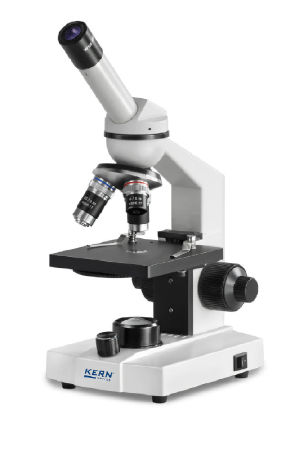
Specialised Animal & Plant Cell
Add to favouritesYear 7 & 8 TOC Specialised cells Animal & Plant specialised cells Identifying structures within cells and describing their function Multicellular organisms are


 Add to favourites
Add to favourites WHAT WILL YOU LEARN?
In the 1590s Hans and Zaccharias Janssen constructed the first usable microscope.
With modern light microscopes we can magnify an object to 1,500 times it size, but an electron microscope can magnify up to two million times!!!
Over time the advancements in microscopy have been tremendous. This has lead to the development of different types of microscope, capable of seeing things we didn’t know existed. There are many different types of microscopes.
Light microscopes
Most schools have access to light microscopes, so it’s important you know how they work.
A ‘specimen‘ is what you are looking at, this needs to be very thin to allow light to pass through it. The light travels from the source (usually a lamp) through the specimen and then through a series of lenses.
This causes the specimen to look much larger than it is! What you see is called a image.

The Stereo microscope, also called a dissecting microscope, has two optical paths at slightly different angles allowing the image to be viewed three-
The distance between the objective lens and the specimen is much greater than in a monocular microscope, so you can work on your specimen while viewing it.

The digital microscope, invented in Japan in 1986, uses the power of the computer to view objects not visible to the naked eye.
It connects to a computer monitor via a USB cable, much like connecting a printer or mouse. The computer software allows the monitor to display the magnified specimen. Moving images can be recorded or single images captured in the computer’s memory.
An advantage of digital microscopes is the ability to email images, as well as comfortably watch moving images for long periods.

The Electron Microscope (EM) is a powerful microscope, allowing researchers to view a specimen at nanometer size.
The Transmission Electron Microscope (TEM), the first type of EM, is capable of producing images 1 nanometer in size.
A second type of electron microscope is the Scanning Electron Microscope (SEM) are approximately 10 times less powerful than TEMs, they produce high-
The TEMs and SEM have practical applications in such fields as biology, chemistry, gemology, metallurgy and industry.

KEY POINTS
Monocular microscope require a thin specimen, a light source and produce a 2D image.
Stereo microscopes can produce a 3D image and allow you to work on a live specimen.
Electron microscopes use electrons, not of light. They can magnify specimens to up-to a million times.
Click the ‘question mark’ icon to test your knowledge with some questions.
WHERE NEXT?
Discover more about this topic or go back to the year 7&8 page.

Add to favouritesYear 7 & 8 TOC Specialised cells Animal & Plant specialised cells Identifying structures within cells and describing their function Multicellular organisms are

Add to favouritesYear 7 & 8 TOC Specialised cells Cell Division Recognising that cells reproduce via cell division & describing mitosis as cell division for

Add to favouritesWOW SCIENCE The black plague The black plague, also referred to as the black death, ravaged Europe between 1347 and 1351. During that

Add to favouritesYear 7 & 8 TOC Specialised cells Unicellular & Multicellular Identifying structures within cells and describing their function There are over 8.7 million

Add to favouritesYear 7 & 8 TOC Building Blocks Cells Distinguishing plant cells from animal and fungal cells Scientists have identified cells as the basic

Add to favourites Year 7 & 8 Topics Building Blocks Animal, plant & fungi Distinguishing plant cells from animal and fungal cells Cells are the

Add to favourites Year 7 & 8 Topics Tardigrade wow science Tardigrades are some of the most toughest organisms on earth! If you think bears,

Add to favourites Year 7 & 8 Topics Microscopes Magnification Examining a variety of cells using a light microscope, by digital technology or by viewing

Everything we provide is free. Help us keep this resource free by donating and helping us cover our running costs. Every little bit helps!